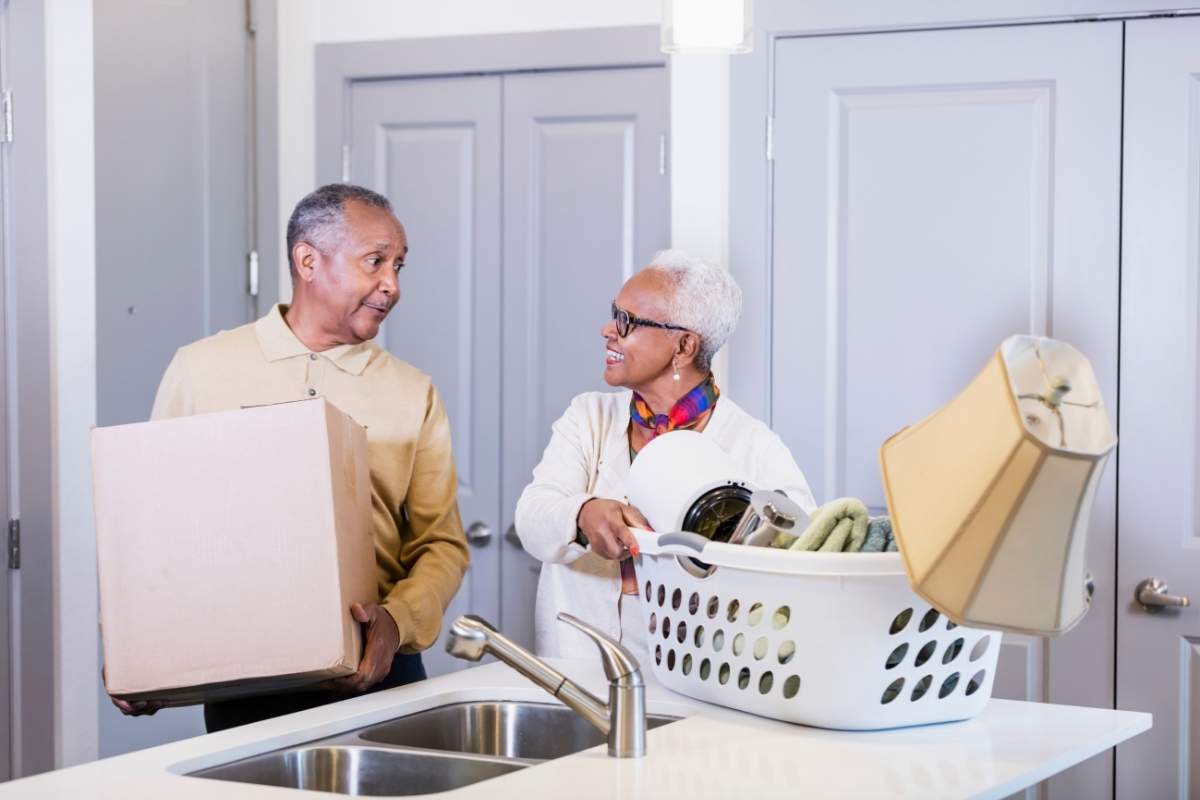Moving is a major ordeal for anyone, but seniors often face particularly difficult challenges when relocating. Seniors may require additional assistance when it comes to downsizing, planning, and executing the actual move itself. As we age, we usually accumulate more things — so often, the first step is to part with a large number of collected possessions. Seniors also may have certain health and safety considerations that can make moving more of a challenge.
The good news is that many organizations and companies specialize in helping seniors move. From concierge-type senior moving specialists to local nonprofits that provide free moving help to seniors, these resources make it easier for seniors to transition to new housing. Seniors often qualify for promotional rates on moving services, such as AARP moving discounts on renting a truck.
If you’re a senior who’s relocating soon, don’t worry or stress. With the right resources and the moving advice for seniors below, you’ll be well prepared to manage this move.

Moving advice for seniors: 11 tips you must know
For most seniors, the last time they moved was probably a long time ago. It’s okay to be a little rusty in the process and seek assistance. The following tips and resources for helping seniors move will show you how to navigate the process with ease.
Tip #1: Plan ahead with a moving and downsizing checklist
The checklist below will give you a general overview of all the things that will happen during your move — and when. Refer to it often as you proceed through your move. Early planning is the key to success!
| 2 months out: | 1 month out: | 2 weeks out: | Week of your move: | Moving Day: |
|---|---|---|---|---|
|
|
|
|
|
Tip #2: Downsize your possessions
If you’re moving from a large family home to a small apartment, you’ll need to reduce the number of household goods you own. Decluttering can be a long and challenging process; it’s only natural to form attachments to our possessions. Begin by categorizing each item by whether you plan to keep it, give it away, sell it, or dispose of it.
Tip #3: Involve your family members in downsizing
If you’re having trouble thinning your possessions, enlist help. Maybe you’re holding on to your vintage grandfather clock for the children, but after talking to them, you learn they have no interest in it. Now is the time to have frank conversations with your heirs about what items they would want in the future, so you don’t needlessly hold on to them.

Tip #4: Get a floor plan of your new space
Having accurate measurements tells you how much of your current belongings you’ll have room for in the new space. Understanding your floor plan can help you narrow it down to only what will fit in your new home. This way, you can plan how you want to lay things out in advance.
Tip #5: Start with the big stuff
When choosing what to bring, start with the largest, bulkiest things first — sofas, chairs, beds, dressers, and tables. These will take up the most space and determine how much other stuff you can realistically bring.
Tip #6: Pack one room at a time
Sorting and packing by room can keep your items organized, making it easier to unpack later. Label each box according to the room it will go in.
Tip #7: Comparison shop for moving services
Moving services can be pricey, but luckily many offer senior discounts. Other discounts might be available through clubs or associations you belong to. When evaluating moving companies, also consider reviews and referrals. Consider hiring a senior move manager that is accredited by the National Association of Senior Move Managers to handle all aspects of your move, including planning, packing, and organizing.
Tip #8: Know your limits
Moving is exhausting work, so always be honest with yourself about how much you can handle. Start packing well ahead of Moving Day, so you have a head start and can work a little bit each day. Be sure to recruit professional movers or capable family members to load and unload boxes.
Tip #9: Embrace technology
If you have a smartphone with a camera, use it to photograph your current home setup so you can arrange things again just the way you like it. This is especially helpful for TVs and connected equipment. Take a photo of the cords and how they’re plugged in so you can refer to it when you’re setting up in your new home.
Tip #10: Tend to your mental health
Moving can be tough for any senior citizen, especially if you’re attached to their current home. Some seniors may experience Relocation Stress Syndrome, which can manifest in depression, anxiety, and confusion. Get plenty of rest, and be aware of your feelings and stress level during the process.
Tip #11: Pack a suitcase of essential items
It may take you several days to unpack, so prepare a bag of essential items you’ll need for the first few days. Include clothes, medicine, and toiletries — including toilet paper. Pack a set of dishes, some towels, and clean sheets as well.
To unlock more senior moving resources, simply get in touch with our team of experts today. This post was repurposed from MyMove.com, to view the original article, click here.


